Idea by
Francisco Moura Veiga
A FORSCHUNG
Call for ideas 2020
A True Terminal
A True Terminal
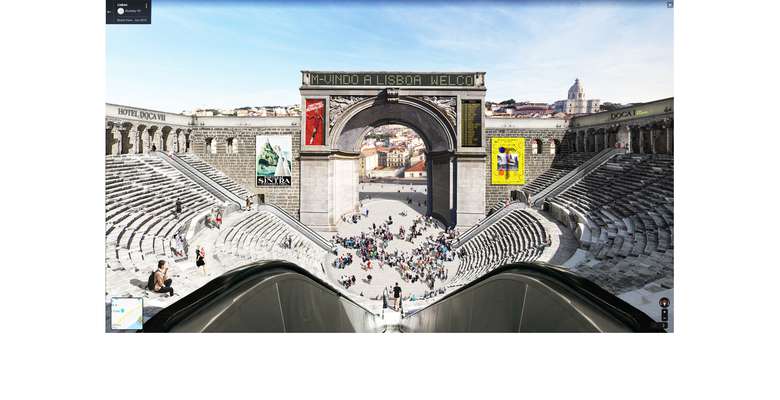
- Site-specific cases
The utterly impossible project aims at raising questions regarding the meaning of public works, of infrastructure, scale and use, by proposing a utilitarian, utopian alternative to the building and surrounding area of the existing Lisbon Cruise Terminal.
The proposal is based on a fictional Roman Theatre/Harbour from ca. 300 AD, summoned for the sake of the argument. The architectural project is formulated through a design process which positions the architect as an editor rather than as an author. Elements from historical buildings are chosen and brought together in order to convey a new message. A comprehensive narrative containing the overlooked potentials of the existing intervention is addressed through short texts and screenshots of the current fictional situation of the True Terminal, using google street view and snaps, further pushing the proposal towards the edge between fiction and reality.
The True Terminal is a fantasy, but the questions it raises can be real.
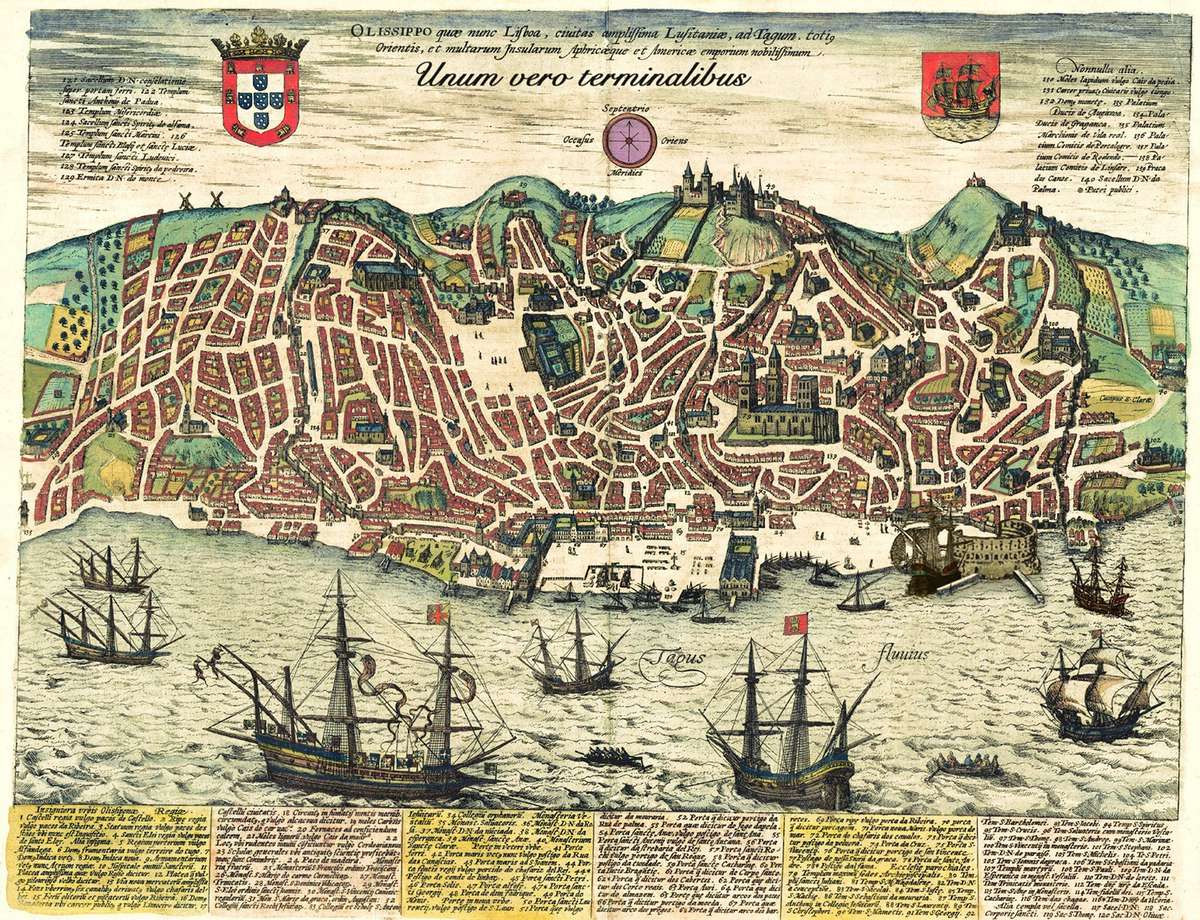
Lisbon in 1598. The city before the 1755 earthquake, tsunami and fires, with the busy Tejo river and the Theatre/Harbour in full use.
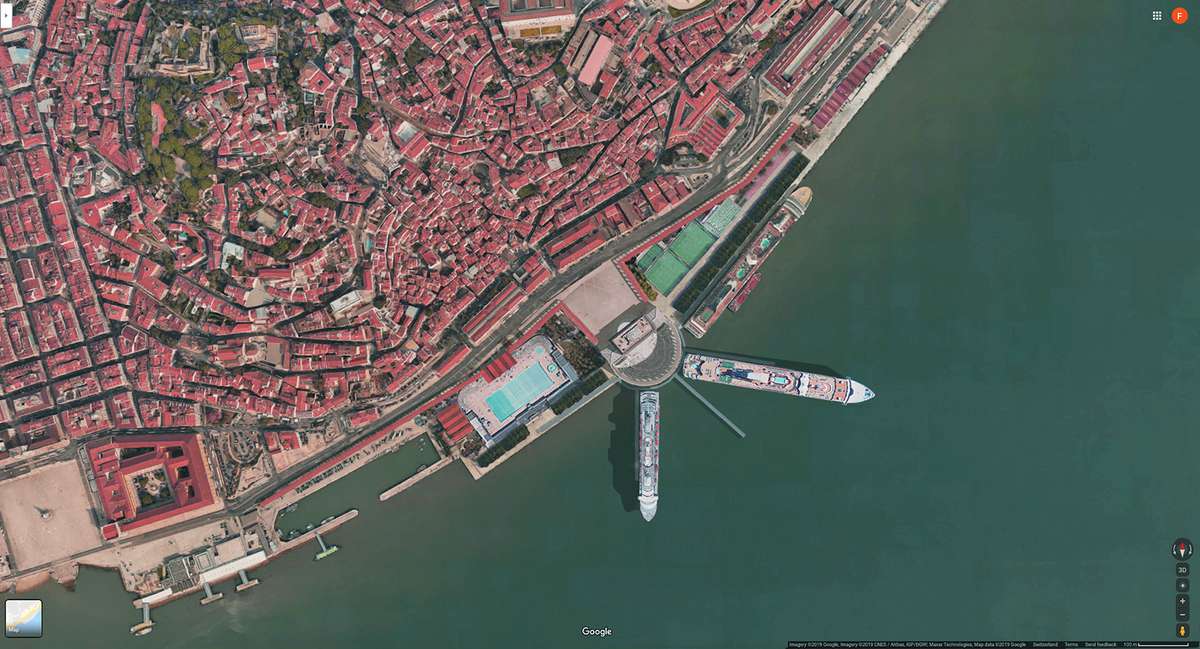
An Orthophoto of Lisbon as it could have now been. Complementary to the Theatre/Terminal update finished in 2017, the city promoted the revamping of the superfluous dock and warehouse areas. olympic outdoor swimming pool (to the West), and the Basketball, Tennis, Futsal and Futseven courts (to the East). These activities demand a scale impossible to provide within the medieval core of the city, have here been made possible by the purposing of the landfills along the river.
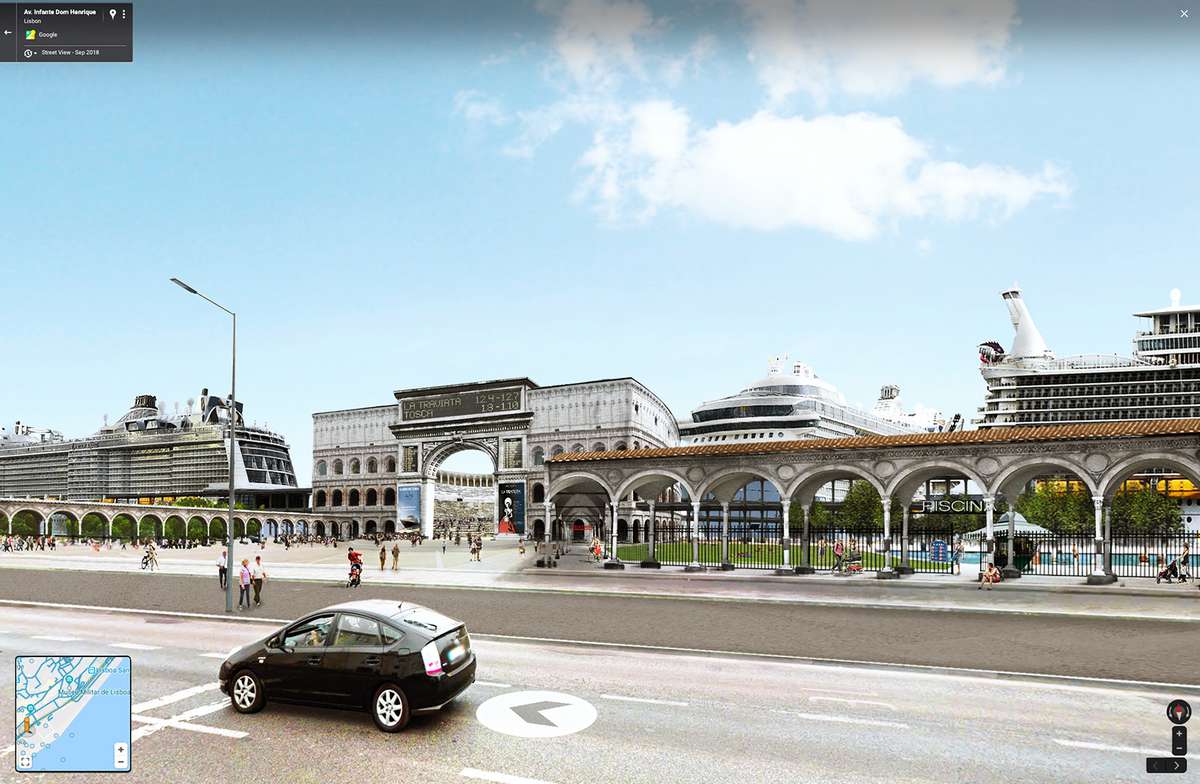
A view from the city onto the True Terminal, the People's Square and the surrounding sport and cultural infrastructure, framed by the connecting porticoes. A public infrastructure at its best, promoting the interchange of goods, people and cultures, in a quite literal manner. One of the only major stone constructions to have survived the 1775 earthquake and its immediate aftermath, the Theater/Terminal has been a historical hub for the city, acting as corner-stone in its cultural development.

From the logistic bridge towards the city. Beyond its cultural weight, the building has proved to be a logistic marvel as well. The form of the amphitheatre allows the docking of multiple boats, all converging towards the logistic centre, lodged under the stands. In order to deal with the intensification of large cruises‘ traffic since the first years of the XXI, only the deepening of the riverbed and technological updates to the prevailing structure on signalisation and safety were necessary.

Advertisement for the newest addition to Lisbon's hotels; the Queen Victoria. In an effort to free the city centre from the real-estate stress it has been under and to accommodate large cruise ships rendered expendable due to the consequences of their use to the environment, the city also promotes their long-term docking, allowing these to function as hotels. A pilot project to repurpose the Queen Elizabeth II as a retirement home will start in 2021, offering controlled rents to retired locals.
A True Terminal
A True Terminal

- Site-specific cases
The utterly impossible project aims at raising questions regarding the meaning of public works, of infrastructure, scale and use, by proposing a utilitarian, utopian alternative to the building and surrounding area of the existing Lisbon Cruise Terminal.
The proposal is based on a fictional Roman Theatre/Harbour from ca. 300 AD, summoned for the sake of the argument. The architectural project is formulated through a design process which positions the architect as an editor rather than as an author. Elements from historical buildings are chosen and brought together in order to convey a new message. A comprehensive narrative containing the overlooked potentials of the existing intervention is addressed through short texts and screenshots of the current fictional situation of the True Terminal, using google street view and snaps, further pushing the proposal towards the edge between fiction and reality.
The True Terminal is a fantasy, but the questions it raises can be real.
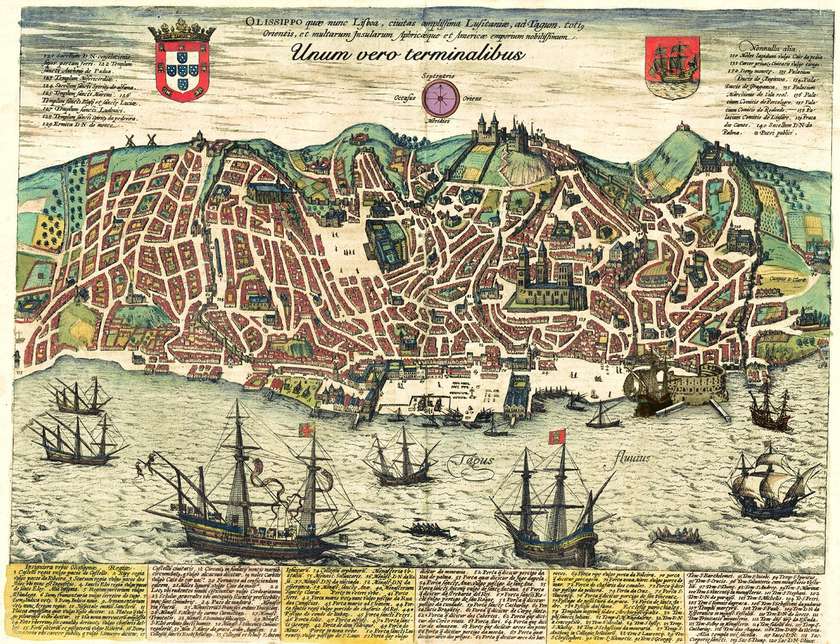
Lisbon in 1598. The city before the 1755 earthquake, tsunami and fires, with the busy Tejo river and the Theatre/Harbour in full use.
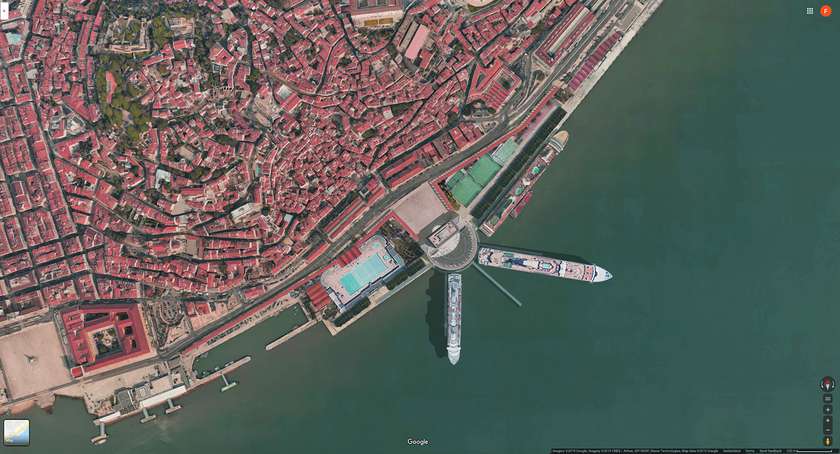
An Orthophoto of Lisbon as it could have now been. Complementary to the Theatre/Terminal update finished in 2017, the city promoted the revamping of the superfluous dock and warehouse areas. olympic outdoor swimming pool (to the West), and the Basketball, Tennis, Futsal and Futseven courts (to the East). These activities demand a scale impossible to provide within the medieval core of the city, have here been made possible by the purposing of the landfills along the river.

A view from the city onto the True Terminal, the People's Square and the surrounding sport and cultural infrastructure, framed by the connecting porticoes. A public infrastructure at its best, promoting the interchange of goods, people and cultures, in a quite literal manner. One of the only major stone constructions to have survived the 1775 earthquake and its immediate aftermath, the Theater/Terminal has been a historical hub for the city, acting as corner-stone in its cultural development.
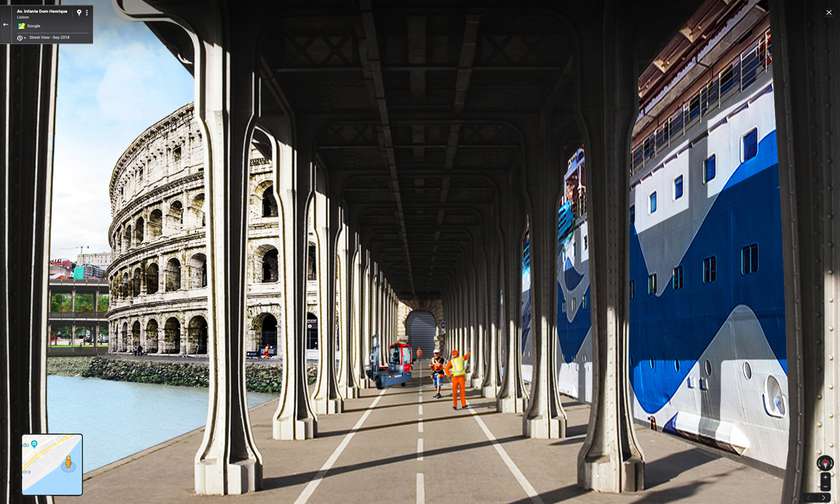
From the logistic bridge towards the city. Beyond its cultural weight, the building has proved to be a logistic marvel as well. The form of the amphitheatre allows the docking of multiple boats, all converging towards the logistic centre, lodged under the stands. In order to deal with the intensification of large cruises‘ traffic since the first years of the XXI, only the deepening of the riverbed and technological updates to the prevailing structure on signalisation and safety were necessary.
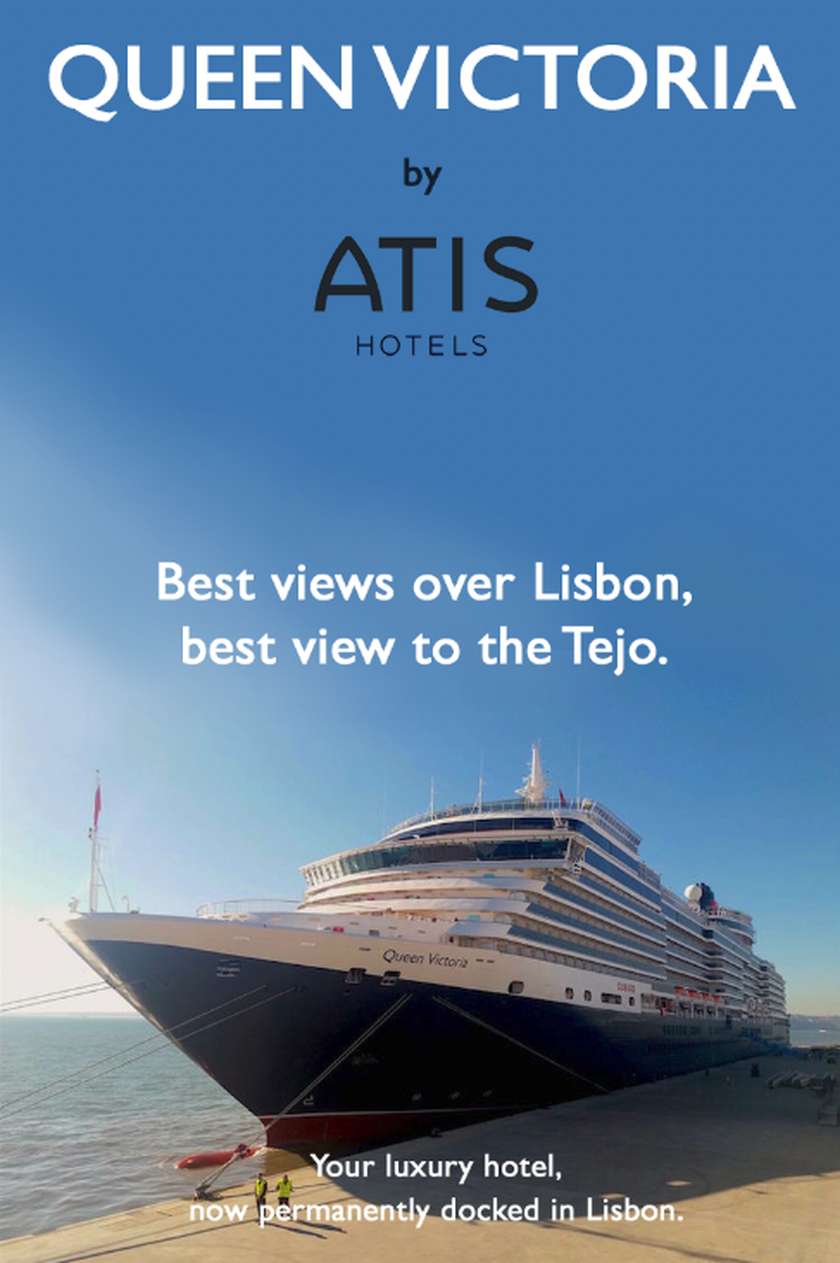
Advertisement for the newest addition to Lisbon's hotels; the Queen Victoria. In an effort to free the city centre from the real-estate stress it has been under and to accommodate large cruise ships rendered expendable due to the consequences of their use to the environment, the city also promotes their long-term docking, allowing these to function as hotels. A pilot project to repurpose the Queen Elizabeth II as a retirement home will start in 2021, offering controlled rents to retired locals.